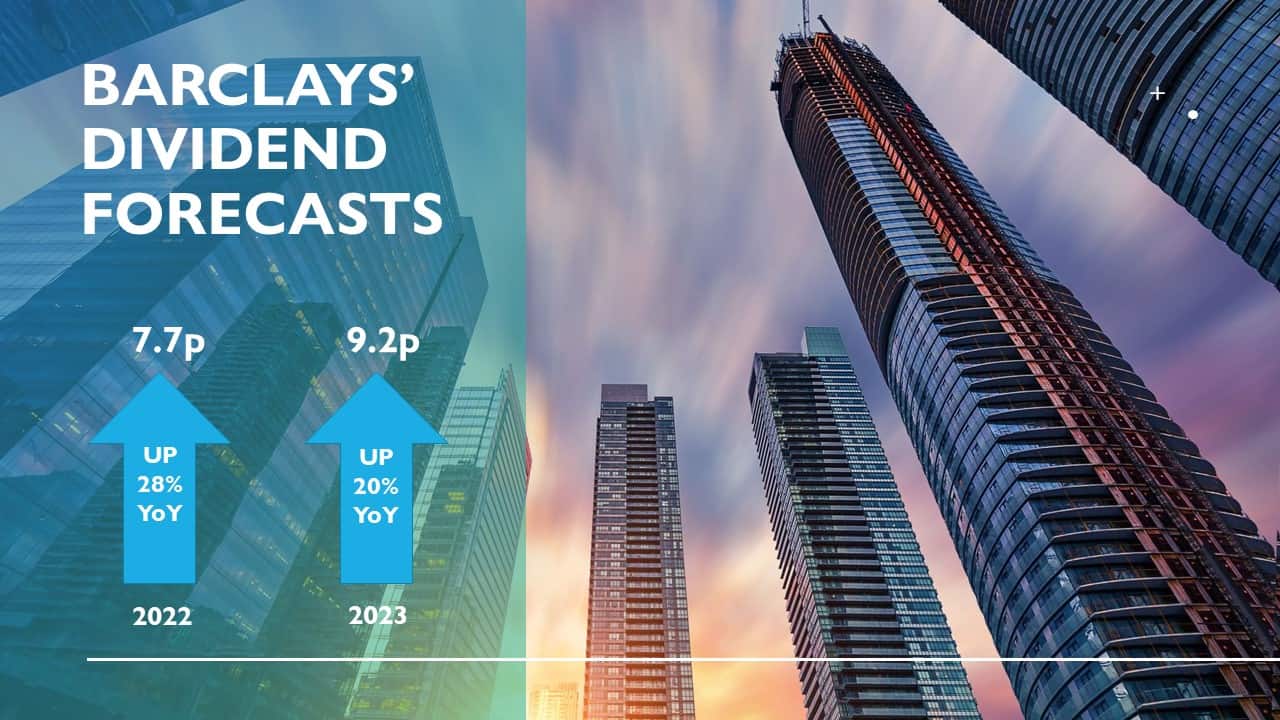The FTSE 100 is packed with excellent dividend stocks to buy despite the uncertain economic outlook. Today, I’m running the rule over beaten-down banking stock Barclays (LSE: BARC).
Barclays shares offer dividend yields far above the FTSE average of 4%. But do the dangers facing investors in the business far outweigh the potential rewards on offer?
6% dividend yields
The Barclays share price has slumped 18% in 2022. This has pushed the dividend yield for the year to 5%. City analysts are expecting a 7.7p per share dividend payment, up from 6p in 2021.
Current dividend forecasts suggest that Barclays should be in great shape to make this payment too. It’s covered 3.8 times by anticipated earnings, way above the security benchmark of 2 times.
Things get even better for 2023 too. Forecasters think the dividend here will rise to 9.2p per share, driving the yield to 6%. An added bonus is that dividend cover improves to a mighty 3.9 times.

Balance sheet strength
Barclays has another trick up its sleeve. A rock-solid balance sheet that could help it help it pay big dividends even if earnings miss their target.
Its CET1 capital ratio stood at the upper end of its target range as of March, at 13.8%. In fact, Barclays’ robust financial position encouraged it to launch a £1bn share buyback scheme in May.
Rates boost
A big plus for Barclays’ profits (and consequently dividend) outlook is that interest rates look set to keep rising. On Monday, for instance, one of the Bank of England’s rate setters said that the benchmark rate — which has risen for five straight months — suggested that more increases are in store.
According to Michael Saunders, “some further monetary tightening remains likely in coming months… to ensure that inflation returns to the 2% target on a sustained basis.”
Put simply, a higher interest widens the difference between what rates banks offer savers and borrowers. This enables the likes of Barclays to enjoy a bigger net interest margin.
Should I buy Barclays?
At the moment banks are benefiting from decades-high inflation as interest rates rise in Britain and the United States. These helped group income at Barclays rise 10% year-on-year in quarter one, to £6.5bn.
But there’s a high risk that the cost-of-living crisis in the UK and North America will come back to haunt the business. In fact, I think the impact could become apparent as soon as next week (28 July) when second-quarter results are released.
Right now, Barclays shares trade on a forward price-to-earnings (P/E) ratio of 5.2 times. It’s a low valuation that reflects the high level of risk the market thinks the bank faces. And the possibility that bad loans could soar and that revenues might slump.
I share investors’ elevated sense of caution. I worry that the Barclays share price collapse fall even further in 2022 and 2023. And I’m concerned that banks like this may take a more cautious approach to dividends amid the darkening economic outlook. For this reason, I’ll be searching for other FTSE 100 dividend stocks to buy.








